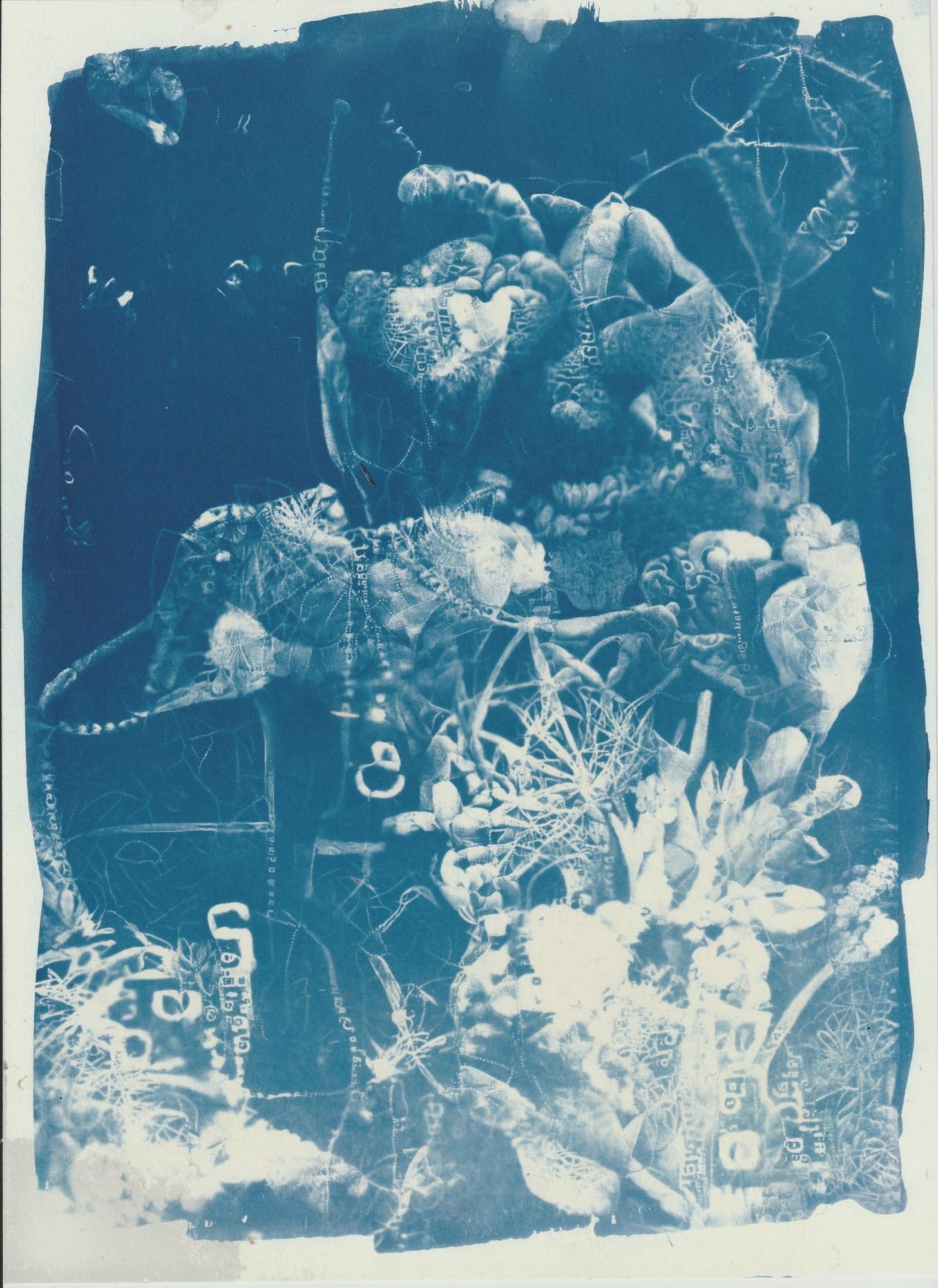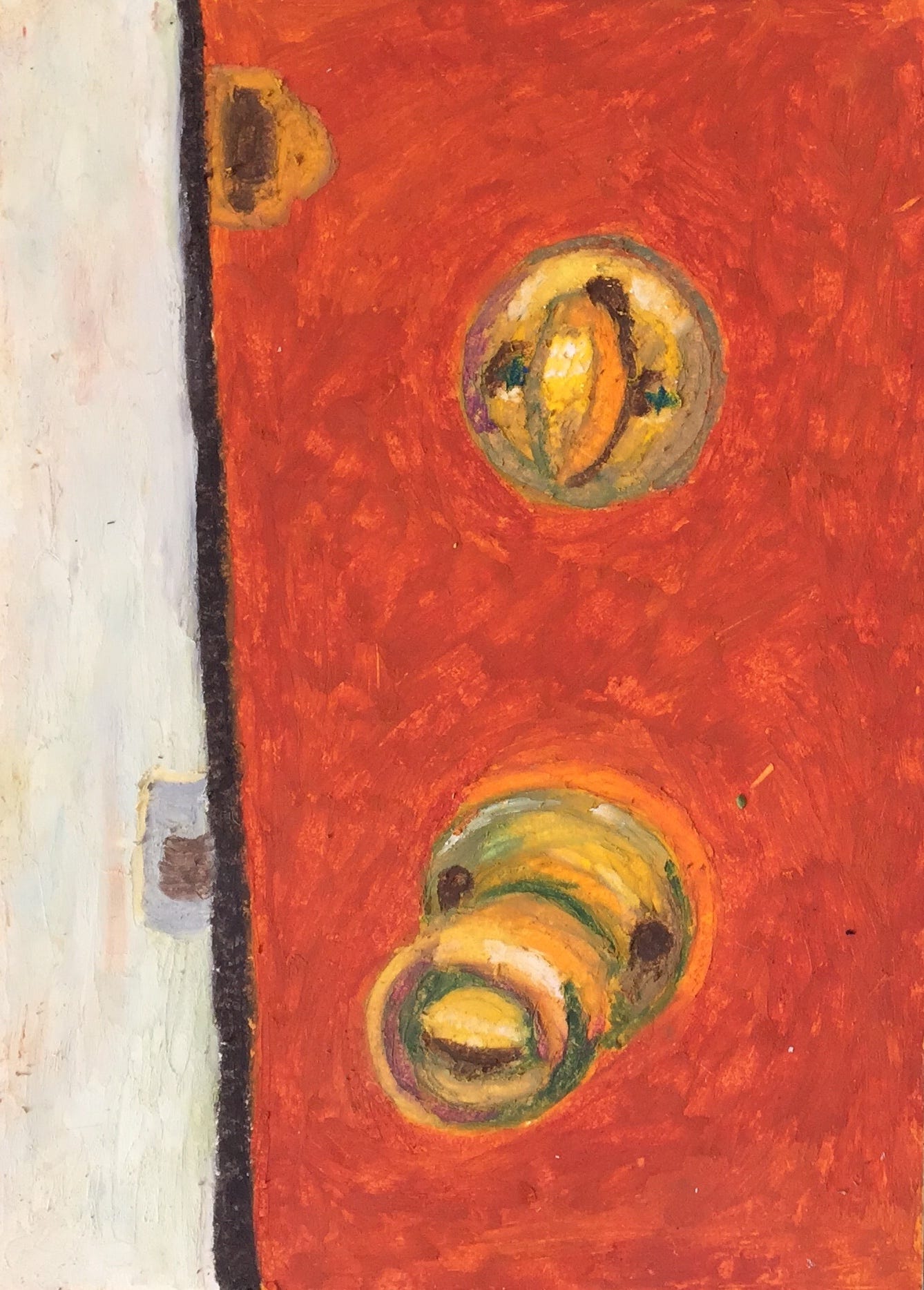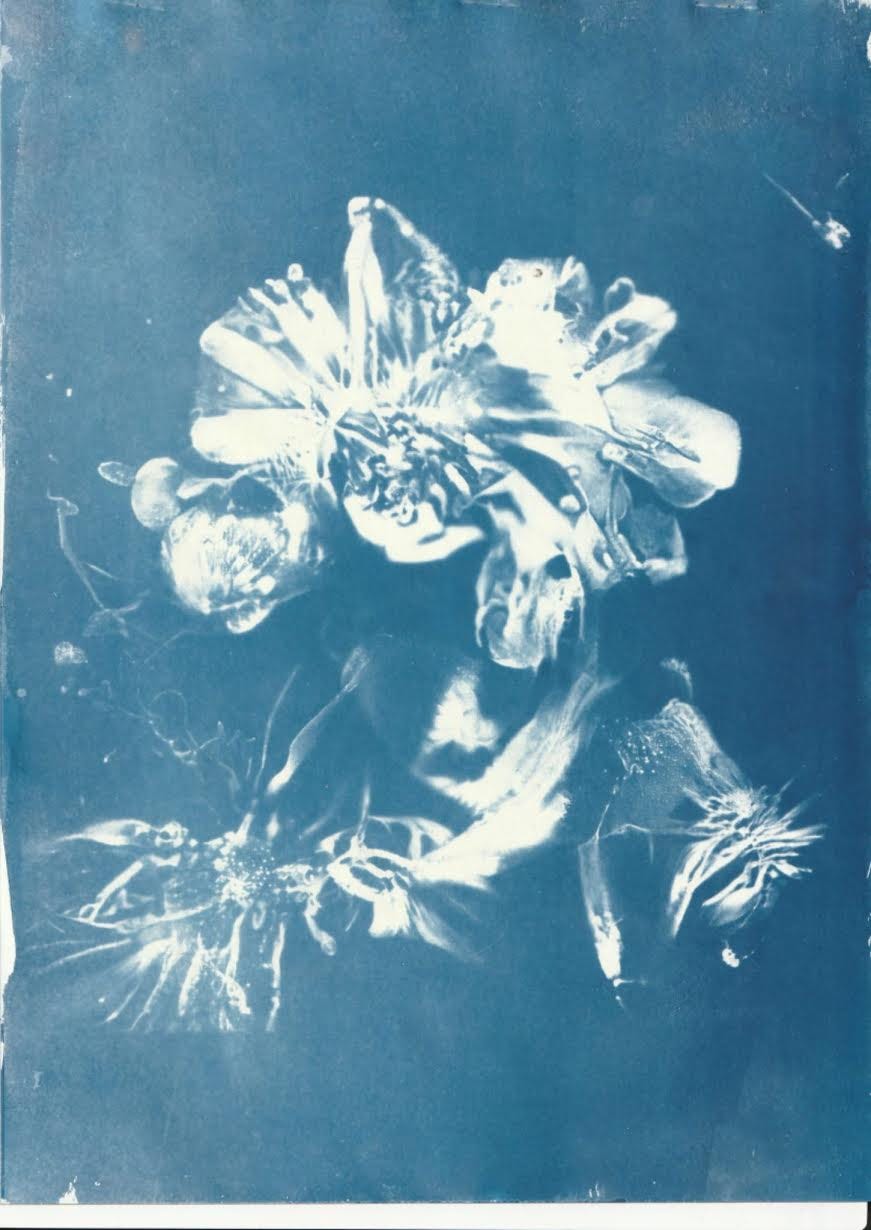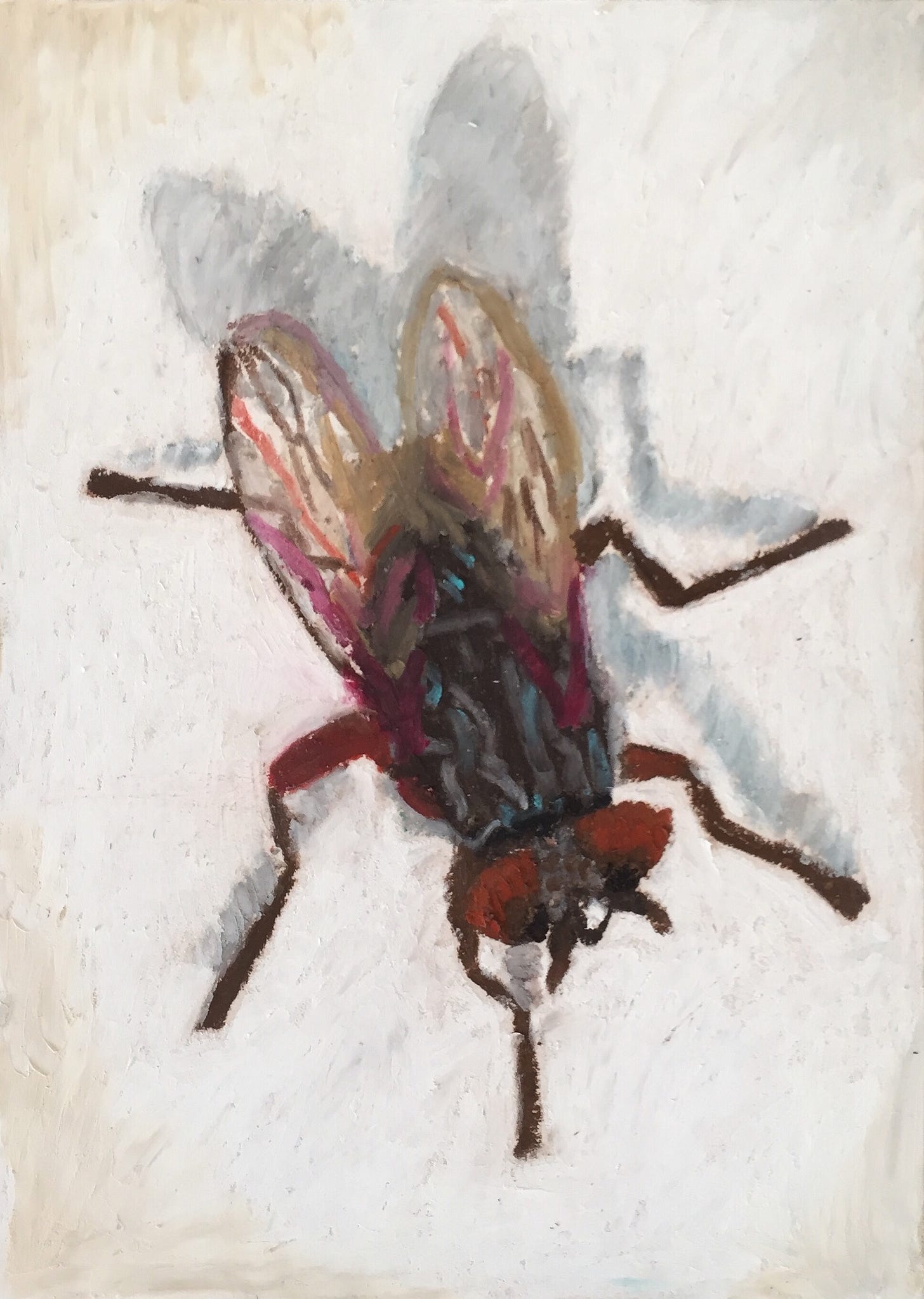Issue 2: quaranTIME
Featuring Sofia Crespo, Dr. Jennifer Freed, Jack Levinson, Zaid Milefchik, Sara Robinson, Bhante Saddhajeewa, & Carlene Stephens
Hey, it’s been a minute!
First & foremost, I want to thank you so much for subscribing to foghorn. If you’re interested in submitting to upcoming issues, please shoot me an email at elizalevinson@gmail.com, and if you’re not sure what to submit, more info is located within this ~ very email ~ :)
Each issue, I will highlight a different fundraising campaign and/or opportunity to get involved via phonebanking/emailing/petition signing as this crisis goes on. This week, I’m shouting out:
Emergency paid time off for Trader Joe’s workers who are immunocompromised or otherwise at risk in Philly: https://www.gofundme.com/f/relief-for-trader-joes-employees-in-philly?utm_medium=email&utm_source=product&utm_campaign=p_email+4803-donation-alert-v5

by Sofia Crespo
Issue 2: quaranTIME
Featuring Sofia Crespo, Dr. Jennifer Freed, Jack Levinson, Zaid Milefchik, Sara Robinson, Bhante Saddhajeewa, & Carlene Stephens
I remember nothing else from Kurt Vonnegut’s Slaughterhouse-Five aside from the opening line, “Billy Pilgrim has come unstuck in time.”
When I read Slaughterhouse-Five, I was sixteen years old and having my life’s first ever Deep Thoughts. I had just experienced my first falling-in-love followed by my first stutter-stop-heartbreak followed by my grandfather’s death. Graduation loomed.
That year was fraught with this Highly Sensitive Person’s first sentient experiences of loss: a whirlwind of slammed doors and speeding Volvos; the smoggy LA skyline, toy-sized cars whooshing, silver roof sparkling; fake plastic flowers, heatwaves hovering over asphalt. A crowded beach, peachbruised knees. In those days our friends were God Love and Self wrapped into one: how strange, how special, to have a moment in time when there were things about yourself that you only just knew. Me and my best friends, we rolled in and out of each other like curved mirrors, held hands and ran downhills, carried their secrets, carried our own.

by Jack Levinson
From that time on I brought a camera with me always: my photos, my freezedried joys. We photographers live between yesterday and tomorrow, sifting through our archives, creating them.
It doesn’t hurt that I’m a planner: I like to know where I’ll be and when; from here to there and how. In a year, in two. I could, I should, I have to. I promise myself I’ll. The dreams, held close, from forever; the ones you swear you’ll keep.
In quarantine, any single memory becomes a jab: it is only loss. The past, audacious in its impossibility: we were how many people, where? We touched, and thought nothing? The future has dissipated. You cannot go to the place you hope to return.

by Jack Levinson
In quarantine, every inch of home is memorizable: dust light towel doorknob shelf. The sounds, the silence. One day we’ll step out into a different world.
In high school, we learned about situations that could occur in a vacuum, sans intervention: gravity, inertia. Finally I learn what it means to exist in a vacuum. To set the pace, to define time. Monday was different from Tuesday if and only if. Saturday could be established by. The spring, the fall, the summer. A ticket’s only worth something if something ever happens. A meal, a drink, a shower, a back pressed to an itchy carpet, a ceiling. To have no excuse: what else could I be doing? Washing machine swirling. Unstuck.
In a poem that cannot not make me cry bleakly entitled “I Won’t Live Long,” poet Jorie Graham writes,
...where will it be necessary to
plant again--will it open--will the earth open--will the seeds that remain--will you know to
find them in
time …
let the openings which are
chance unknowing loneliness the unrelenting arms of
form, which knows not yet the form
it will in the end
be…
Be still. Wait. And we, we
will be left behind.
Except just now. If you still once.
That you might remember.
Now. Remember now.

by Zaid Milefchik
In the course of this week’s newsletter, I unstuck myself -- momentarily -- to interview a number of different experts on the subject of time. For a view on the past, I spoke with Smithsonian Institute Curator Carlene Stephens. For wisdom on the future, I consulted futurist Sara Robinson and psychological intuitive Dr. Jennifer Freed. And for advice on how to handle the present, fear, and impermanence, I spoke to Bhavana Society Vice Abbot Bhante Saddhajeewa.
With luck, this week’s topic will be gleaned as inspiration for an upcoming essay. Highlighted quotes from Carlene Stephens and Bhante Saddhajeewa, as well as an edited video of my conversations with Dr. Freed and Sara Robinson, are below. Quotes from our interviews have been edited for clarity and brevity.
Bhante Saddhajeewa - Vice Abbot, Bhavana Society (https://bhavanasociety.org/)
This is a wonderful opportunity to practise meditation. Now, we have a wonderful opportunity to think about ourselves. Just think about in this world, what happened to us. We had so many things with us. We had money, we had power, we had so many facilities with us. But. None of these facilities was able to help us to protect ourselves.

by Zaid Milefchik
Whenever we have angry thoughts, you can’t be happy. You can’t see things very clearly. If you are angry, can you speak clearly to others? If you are angry, can you be happy yourself? If you are angry, can you say what you wanted to say? In this world, all human beings, without thinking the nature, environment, without thinking others, they did what they wanted to do. To achieve their desire, desireful thoughts. Now, we are paying for that unwholesome thoughts. Living in the place where you are, as a cage. That cage created by yourself! That cage is built by you. Not somebody else. This coronavirus is a creation of human beings. Human beings are the main reason to create this virus. In this world. Because they polluted air, they polluted the environment, they polluted water, every and each things what can be manipulated, they manipulate it and they pollute it. Why? Because they pollute with greediness. They pollute with anger. They pollute with ignorance. Ignorance is the most dangerous part. Ignorance means not knowing. What are they not knowing? They don’t know the nature of the world. They completely forgot about the natural law. This world is not something that belongs to us. This world is the place that we can live.
[In Buddhism,] impermanence is the main thing. We have to do develop our loving tenderness thoughts. Loving tenderness holds meaning. It’s the loving and care thoughts for our brother. Loving tenderness is connected with compassion, sympathy, joy, and equanimity. This is the time period that we can use for it. Because normally, in other days, we are very busy. Going here and there, and then this. So many activities that we have. But. Now, we have time to develop our concentration. Develop our concentration, we can use three activities. First thing, as I mentioned, loving tenderness thoughts. To develop loving tenderness thoughts, you should apply to practise generosity. Practising generosity means, the feelings will arise in your mind when you start to practise generosity in this world. I am not the only person who is living in here. There are so many living beings including me. I am part of this world. I am part of this house. I am part of this land.

by Sofia Crespo
Therefore, I’m not supposed to do any harmful things to others, because if I’m doing harmful things; if I’m doing something bad to others, then I have to pay for it. Therefore, to get bad feelings, I am not the person who has authority to control this world, then we are the people who are living together, to come together, is the most important. Through our loving kindness, through our practise in loving kindness is the only path for that. To understand others. To understand others’ thoughts.
This is why we always say: be mindful. To be mindful means, first, you have to realise: I am a human being. We have to use this opportunity to listen to the environment. Listen to all these creatures. They are making some sounds, very beautiful sounds. Let’s listen to these sounds. This is the way how we can develop our mindfulness. And this the way how we can develop the thoughts: I am a part of this world. I am not the owner of this world.

by Jack Levinson
Carlene Stephens - curator, Smithsonian Institute, Division of Work and History, research includes the history of time in the United States
What over the centuries has happened is: the clock-time, the watch-time, has had increasing significance, as more people got clocks, more people got watches. And all of this knowing what time it was, or is, is calculated to bring us together, and serve us as we are together. It’s -- it’s the whole business of, you have a -- you have an employee, a work force of 10,000 people. How do you get them to do what they’re supposed to do, when you, as the manager, want them to do it? And it -- and it’s, you know, punch-clocks and shifts and strict enforcement of punctuality. Well, now, now, now, all of those things that we put in place, to help us work together, be together, show up to school on time, all of those things are -- are not in play, if we’re not together.
When this all started, our museum, the National Museum of American History, decided that we should pay attention! You know, this is a formative moment in the history of the country, and we have a responsibility to document things like this, so I observed, already, at the very beginning of being shut out of the museum, that there was a time element to this virus story. And I started to think about, well, what would I collect? If I could actually leave my home and talk to people, what would that be? If I were gonna collect something very specific to the -- the idea of time and the virus, what would that be? And -- I came up with one thing, so far. Just one. And -- and if you have other ideas, I would love to hear it. [laughs] So -- because -- okay. So, the one thing that I came up with is clothing. A lot of people, to get on a schedule, without the benefit of a clock or a watch, they change their clothes, from their pajamas to -- well, maybe their sweatpants. I don’t know. I don’t wear sweatpants. But -- but they’re present-day workclothes. So -- I could collect the story of somebody who would say, you know, I’m making this up, but they would say, well, I’m the kind of person who really needs to get ready for work. So, I take off my pajamas, I take a shower, and I change into these clothes. And -- and -- that would be an indicator of everyday life for an office worker who is teleworking.

by Zaid Milefchik
Because we are historians based in a museum, our thoughts go, compassionately, to the people, but also to think about if we were documenting this experience, not for today, ‘cause journalists are doing that; you’re doing that. But for posterity. You know? What -- what will the future want to know, about the pandemic in 2020? And so we -- we ask questions. We’re constantly asking questions.
I have to hope that we will be different, after this. It’s a moment to pause, it’s a moment to examine the future, the past, and decide what we want, instead of having this hodgepodge of systems and behaviours that have grown, for good and for ill, I mean, there are a lot of good things, and a lot of things we might wanna chuck or do differently.
<iframe src="
width="640" height="360" frameborder="0" allow="autoplay; fullscreen" allowfullscreen></iframe>
ABOUT THE CONTRIBUTORS
Sofia Crespo is a multimedia artist in Berlin. Check out her work at @soficrespo91 on Instagram.
Dr. Jennifer Freed is a psychological astrologer in Santa Barbara, California. Check out https://www.jenniferfreed.com/astrology to learn more about her upcoming projects.
Zaid Milefchik is a multimedia artist based in LA. Find him on IG at @zaidmilefchik.
Jack Levinson is a multimedia artist (and my brother!) based in LA. Find him on IG at @boringdude1 and learn about his ongoing performance project, Square Circle, at https://www.thesquarecirclestory.com/ and on Instagram at @squarecircleofficial.
Sara Robinson is a social futurist in Seattle, Washington.
SEEKING SUBMISSIONS!
Issue 3 will focus on DIY crafts/creating during quarantine.
What have you been making? Show me in any form --
images, videos, sound files, writing, and shoot your
email over to elizalevinson@gmail.com.
Stay healthy! XO!
Eliza




So cool!